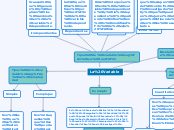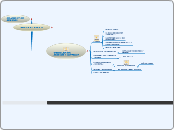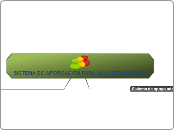TIPOS DE ENSAYO
To name your story, you have to think about the overall message and what you want your audience to understand from the story. Also, make it relevant and easy to remember.
FILOSÓFICO
The ending of a story is essential. We all know that if the ending is weak, what happened before loses its importance. So make it unpredictable, but fair. A resolved ending answers all the questions and ties up any loose threads from the plot.
This is the closure section of the story.
See examples of possible outcomes below:
- all problems have been solved
- it's clear how each one of your characters ends up
- your main character is transformed by the challenge
EL TEXTO FILOSÓFICO ES UN TEXTO DONDE EL AUTOR ANALIZA CRÍTICAMENTE CIERTO TEMA QUE SE RELACIONA CON LA FILOSOFÍA. HABLA PRINCIPALMENTE DE COSAS COMO LA MUERTE, LA EXISTENCIA Y LA FELICIDAD, EL AUTOR QUIERE MOSTRAR SUS CONOCIMIENTOS
Try answering these questions to come up with a closure:
- Have all the problems been solved?
- Is there a clear picture of what happens with each character in the story?
- Has the challenge transformed your main character?
- How do the characters feel in the end?
SU CLASIFICACIÓN ES:
> CRÍTICO
> ARGUMENTATIVO
SU METODOLOGÍA ES EN BASE A:
> LA ESTRUCTURA ESTÉ CORRECTA
> QUE EL TEXTO SEA ORIGINAL
> SE DEBE TENER UN BORRADOR
> BUENA ORTOGRAFÍA Y GRAMÁTICA
SU ESTRUCTURA ES:
> TÍTULO
> INTRODUCCIÓN
> DESARROLLO
> CONCLUSIÓN
CIENTÍFICO
The middle of the story is where you add layers of complications that will lead to the end. Reveal more about the character's journey. Did their personality go through changes? How did they overcome the challenges? And as you build up the story’s central conflict, make it more personal to that character. Also, from the middle act, you have to lead into the final act.
Each story has a main character and that character usually needs to solve a problem or challenge. The character's challenge is the one that creates tension throughout the story.
ES UN ESCRITO RELATIVAMENTE BREVE, SE DEDICA A UN TEMA Y BUSCA PROFUNDIZARLO, ES UN TEXTO DONDE EL AUTOR EXPRESA SU PUNTO DE VISTA A PARTIR DE INFORMACIÓN RECOGIDA Y PRESENTADA CON ANTERIORIDAD
In most stories, there are 3 challenges. The number 3 is a mystical number symbolizing completeness. Try to come up with interesting challenges with which your character needs to struggle.
See a few examples below:
- turns into a werewolf at night
- is sent back in time
EL ENSAYO CIENTÍFICO SE CLASIFICA EN:
> ARGUMENTATIVOS
> CRÍTICOS
> POÉTICOS
> EXPOSITIVOS
SU METODOLOGÍA ES LA SIGUIENTE:
> ELEGIR UN TEMA
> USA INFORMACIÓN ADECUADA Y VERÍDICA
> PLANTEA HIPÓTESIS
> INVESTIGA, EXPERIMENTA Y COMPRUEBA LA VALIDEZ DE SU HIPÓTESIS
> LOS RESULTADOS DE LA INVESTIGACIÓN SE VUELVEN ARGUMENTOS
SU ESTRUCTURA ESTA BASADA EN:
> TÍTULO
> PLANTEAMIENTO O TESIS
> DESARROLLO DE LA IDEA
> CONCLUSIÓN
> POR ÚLTIMO LAS BIBLIOGRAFÍAS
LITERARIO
In the beginning of the story (or the exposition), you will need to introduce the setting and characters. You might also want to introduce the main conflict. This part of the story is important because it gives the reader necessary background information and maybe even a first insight into a character’s personality.
¿QUÉ ES?
Characters are essential to a good story. Usually, the protagonist(s) is/are the most affected by the plot. Introduce a character by focusing on their actions, interests, and occupation, as the physical appearance doesn't make a difference in most cases.
ES UNA DISERTACIÓN BREVE QUE ANALIZA UN TEMA QUE ES ESCOGIDO LIBREMENTE POR PARTE DEL AUTOR
Type in the name of your character.
SE CLASIFICAN EN:
> EXPOSITIVOS
> ARGUMENTATIVOS
> CRÍTICOS
> ARGUMENTATIVOS
What is your character's main goal?
fight Evilfind lovedefeat his/her enemyrule the worldmake friendstime travelmake an awesome discoveryOther
SU METODOLOGÍA CONSISTE EN:
> DOCUMENTACIÓN
> PREPARACIÓN
> REDACCIÓN
> LA ELECCIÓN DE UN TEMA
Which traits best describe the character's personality? Choose more if necessary:
introvertedloyalkindindependentquick-thinkingadventuresomeidealisticsweet-naturedcalmrisk-takercreativewittystrictfussyweirdclumsyharshaggressivecarelessclingingcowardlycrueldeceitfulimpulsiveOther
SU ESTRUCTURA SE BASA SIMPLEMENTE EN
> INTRODUCCIÓN
> CONTENIDO
> CONCLUSIÓN
Choose the type of your chacter:
Protagonist (main character)Antagonist (main character's opponent)Flat (stereotypical character)Round (his/ her personality develops throughout the story)Static (doesn't evolve as a person throughout the story)Dynamic (dramatical change in personality)Confidant (the main character trusts him/ her)Foil (contrasting character who enhances the personality of another character)Other










